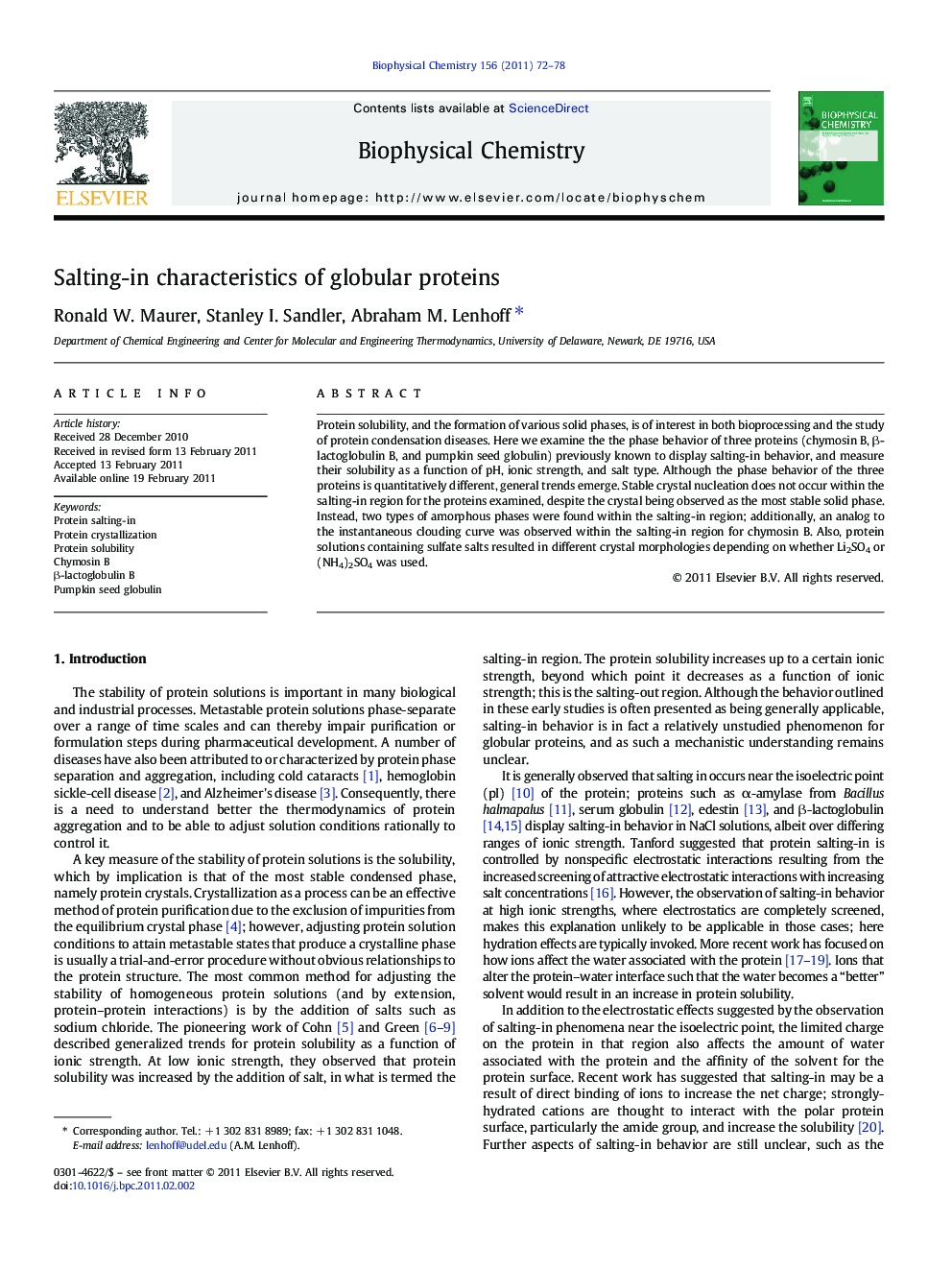| Article ID | Journal | Published Year | Pages | File Type |
|---|---|---|---|---|
| 5371504 | Biophysical Chemistry | 2011 | 7 Pages |
Protein solubility, and the formation of various solid phases, is of interest in both bioprocessing and the study of protein condensation diseases. Here we examine the the phase behavior of three proteins (chymosin B, β-lactoglobulin B, and pumpkin seed globulin) previously known to display salting-in behavior, and measure their solubility as a function of pH, ionic strength, and salt type. Although the phase behavior of the three proteins is quantitatively different, general trends emerge. Stable crystal nucleation does not occur within the salting-in region for the proteins examined, despite the crystal being observed as the most stable solid phase. Instead, two types of amorphous phases were found within the salting-in region; additionally, an analog to the instantaneous clouding curve was observed within the salting-in region for chymosin B. Also, protein solutions containing sulfate salts resulted in different crystal morphologies depending on whether Li2SO4 or (NH4)2SO4 was used.
Graphical AbstractDownload full-size imageResearch highlights⺠Salting-in of proteins occurs only under limited conditions. ⺠pH appears to determine the existence of the salting-in phenomenon. ⺠Crystal nucleation with NaCl was not observed within the salting-in region. ⺠Liquid/gel-like droplets are the solid phase formed in the salting-in region. ⺠Sulfate salts show little difference in behavior in salting-in, but may in salting-out.
